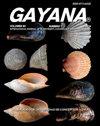Does the presence of livestock alter the trophic behaviour of sympatric populations of wild camelids Vicugna vicugna Molina 1782 and Lama guanicoe Müller 1976 (Artiodactyla: Camelidae)?: Evidence from Central Andes
IF 0.2
4区 生物学
Q4 ZOOLOGY
引用次数: 2
Abstract
ABSTRACT We described and compared the diets of two sympatric Andean camelids, during the humid season (austral summer) in a site of Northern Chile, in presence of domestic livestock. Results indicate that: 1) grasses and shrubs are the main component in the diet of both camelids, 2) shrubs were more consumed by V. vicugna ; 3) V. vicugna and L. guanicoe used the same trophic resources but in different proportions; 4) in mountain environments, wetlands exploitation by wild camelids seems restricted by domestic cattle, which would cause the displacement of Vicunas and Guanacos to suboptimal habitat for feeding. K EYWORDS : Guanaco, Vicuna, livestock, diet, herbivory. RESUMEN Describimos y comparamos la dieta de dos poblaciones simpatricas de camelidos silvestres, durante la estacion humeda (verano) en un sector del norte de Chile en presencia de ganado domesticado. Nuestros resultados indican que: 1) gramineas y arbustos son el principal componente de la dieta de ambos camelidos; 2) arbustos fueron consumidos principalmente por牲畜的存在是否改变了同域野生骆驼种群Vicugna Vicugna Molina 1782和Lama guanicoe m ller 1976(偶蹄目:骆驼科)的营养行为?来自安第斯山脉中部的证据
我们描述并比较了两种同域安第斯骆驼的饮食,在潮湿季节(南方夏季)在智利北部的一个地点,有家畜存在。结果表明:1)禾草和灌木是两种骆驼的主要食材,2)骆马以灌木为主;(3)骆马与鸟冠骆马利用相同的营养资源,但比例不同;4)在山地环境中,野生骆驼类对湿地的利用似乎受到家畜的限制,这将导致骆马和瓜纳科斯转移到次优栖息地。关键词:瓜纳科,骆马,家畜,日粮,草食描述了在智利北部的农业部门,在智利国内的农业部门,在智利北部的农业部门,在智利国内的农业部门。研究结果表明:1)玉米的主要成分为玉米的主要成分;2)杨树的耗材原理差
本文章由计算机程序翻译,如有差异,请以英文原文为准。
求助全文
约1分钟内获得全文
求助全文
来源期刊

GAYANA
Agricultural and Biological Sciences-Aquatic Science
CiteScore
0.60
自引率
0.00%
发文量
5
期刊介绍:
GAYANA is a scientific journal published by Universidad de Concepción, Chile. It is the modern version of Gayana Oceanología and Gayana Zoología. Therefore its numeration starts at volume 63(1).
GAYANA covers all aspects of zoology and oceanographic research. It is structured in five sections, defined by subject or discipline: Ecology, Biodiversity and Taxonomy, Earth Sciences, Evolutionary, and Applied Biology and Environmental Biology. Each section is in charge of an editor who receives and manages the manuscripts sent for evaluation in close collaboration with the editorial board.
 求助内容:
求助内容: 应助结果提醒方式:
应助结果提醒方式:


